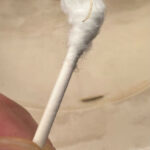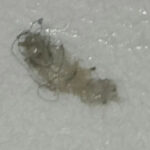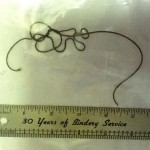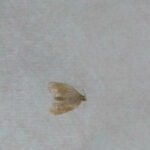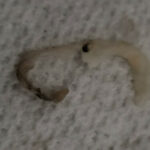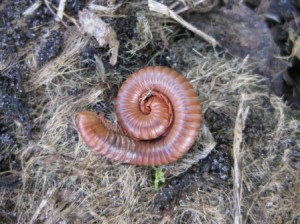Catalpa worms – or Catawba worms (the terms can be used interchangeably, which is exactly what we’ll do) – have evidently been on readers’ minds recently. Our newest article is about white eggs on Catawba worms, and the most recent reader question we received is about Catalpa worms. This most recent question is about a highly specific matter: a reader was wondering why he found only one Catalpa worm in Northern Indiana in the past seven years. Obviously, we don’t know the answer to this exact question, but we can speak to more general matters, like where you can find Catawba worms and why you might want to find them, and we can also offer some potential reasons why our reader is struggling to find Catalpa worms.
First, we should briefly mention, as we always do, that Catawba worms – despite being called Catawba worms – are not actually worms, at least according to the definition of worm we endorse. Instead, they are caterpillars, in this case the larval form of sphinx moths (sometimes called Catalpa Sphinx moths). Catawba worms make excellent fish bait, and this is primarily why they are known and sought after. In fact, it is fairly common for people to plant Catalpa trees (a.k.a. Catawba trees) as a way to “harvest” the caterpillars for fish bait. Not everyone is a fan of Catalpa worms, however, as Catawba trees are also used for fine woodwork, and while the caterpillars rarely cause any substantial harm to the trees (they generally just defoliate them), they are still regarded as a pest. We presume our reader likes Catalpa worms, however, as he seems mildly distressed by the lack of Catawba worms.
You can essentially find Catalpa worms anywhere in the southeastern region of North America. They are all along the coast of the United States, from Maine to Florida, and they are found as far west as Iowa. Obviously, Indiana is in this region, and you can certainly find Catawba worms in the state. What is interesting, though, is that Catalpa worms only eat Catalpa trees, and so you will only find them on or near Catalpa trees. The main thing we can say to our reader, then, is that there have to be a lot of Catalpa trees around if one hopes to find a lot of Catalpa worms.
Given that Catawba worms are in Indiana, there are Catawba trees around, but of course they aren’t spread around evenly. We obviously have no idea what the tree situation is like near our reader, but he did mention that he is in Northern Indiana, which has a colder climate than many of the places in which you can find Catalpa worms. Although Catalpa trees are hardy and can withstand lots of weather conditions, temperate climates (all other things being equal) are more conducive to vegetation and caterpillar life, so a place like Northern Indiana is probably not the easiest place to find Catalpa worms or trees. And regardless of the absolute number of Catawba worms found in any given region, they won’t all be found at the same time. In Northern Indiana, for instance, Catalpa trees bloom later in the summer than in Southern Indiana, so the Catalpa worms come out later in the north than they do in the south. We’re not sure if this bears on the lack of caterpillars in our reader’s region of the state, but it is worth mentioning. You have to not only know where to look for Catawba worms, but also when.
In truth, though, nothing we have said really explains exactly why our reader found one and only one Catalpa worm. If it was definitely a Catalpa worm, he must have found it on a Catalpa tree, and if these trees are in the region, it does seems strange that he found only a single caterpillar in seven years. However, we have said about all we can say on the matter, and hopefully something we have said is at least partially illuminating to our reader.
All About Worms is always free, always reader-supported. Your tips via CashApp, Venmo, or Paypal are appreciated! Receipts will come from ISIPP Publishing.



